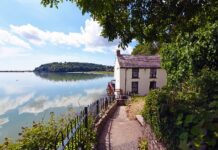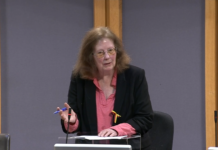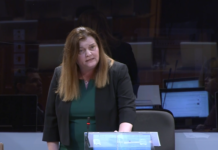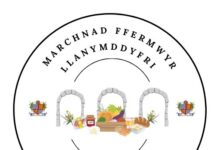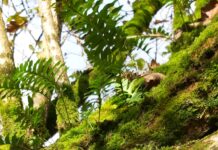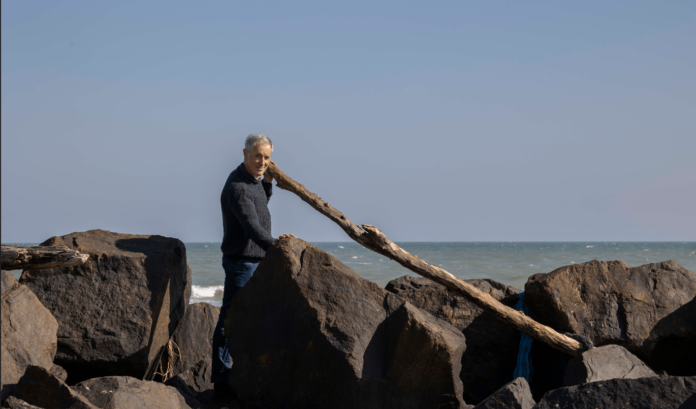
David Begley’s art is born from the seashore at Ballyconniger Beach in Co. Wexford. After scavenging along the shore for driftwood, he bakes it to make charcoal for creating his evocative drawings. His constant walking and scavenging have given him a blow-by-blow view of the dramatic costal erosion in the area. David said “The bay at Ballyconniger has changed so much in my time here. I used to walk in front of the gate along the cliff top. This same gate is now perched on the edge of the cliffs. That’s a loss of 3 metres in as many years. Up until 2020, I think, the bay was a crescent. It was an excellent place for gathering driftwood. By contrast, Killmuckridge has gained land as the currents sweep north.”
He not only makes art from driftwood charcoal, but he now is also making ink from seawater too, saying “the salt content of sea water has fascinated me for a long time. Salt acts as a catalyst in ink making.” The sea is a medium for making art, and the changing sea is transforming its properties as an artistic medium “I’ve begun researching the acidification of the ocean as part of ink making. In order to make ink I use rainwater – average PH 5.6. I steep oak galls and other tannic materials in rainwater to create a tannic acid. Acidity produces colour, but this acidity over time is corrosive. Average ocean PH is 8.2 but has fallen considerably in the past 70 years. To highlight this, I plan to shift from rainwater to seawater for future inks.”
In 2021 David was commissioned by Ports, Past and Present, a project funded by the European Regional Development Fund through the Ireland Wales Co-operation Programme, led by Professor Claire Connolly at UCC. The project celebrates the Irish Sea Ports through exploring their heritage and by a series of Creative Commissions. David was asked to make an artwork inspired by Rosslare Harbour. He chose to explore the story of Ned Wickham, a 23-year-old lifeboat pilot, and the 25-metre blue whale he captured at the mouth of Wexford Harbour in 1891, now known as the Wexford Whale (its skeleton hangs at The Natural History Museum, London and there was named ‘Hope’). He began gathering driftwood at The Burrow, Rosslare and Rosslare Harbour in order to bake driftwood charcoal. David facilitated drawing and animation workshops at Scoil Mhuire, Rosslare so that the children could draw their interpretations of the story and create short animations.
Following the school project, David began drawing scenes for his own animated film. Working on single sheets of paper, David adjusted and photographed the same drawing hundreds of times to create motion. The stunning animated film that resulted, accompanied by soundtrack specially composed by Ruah Pearson can be found at https://creative-connections.pubpub.org/pub/wexford-whale-film/release/4
David’s work continues to be inspired by his scavenging walks along the seashore. His next animation might well be about the erosion at Ballyconniger “I would love to make an animation on this theme”
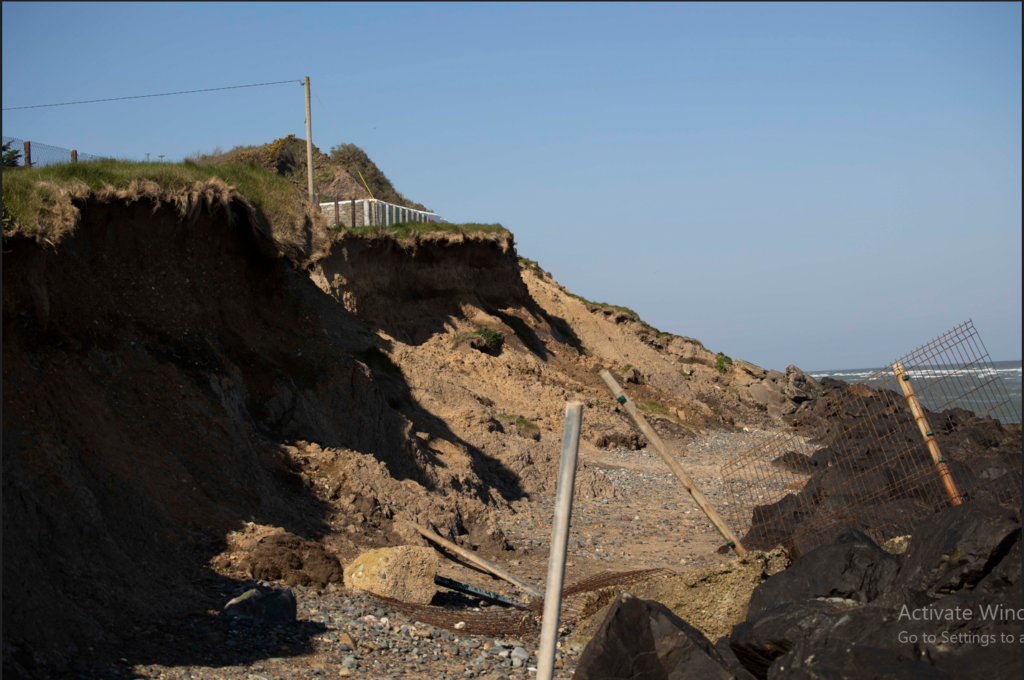
The dramatic costal erosion at Ballyconniger Beach, Co. Wexford (Clare Keogh)
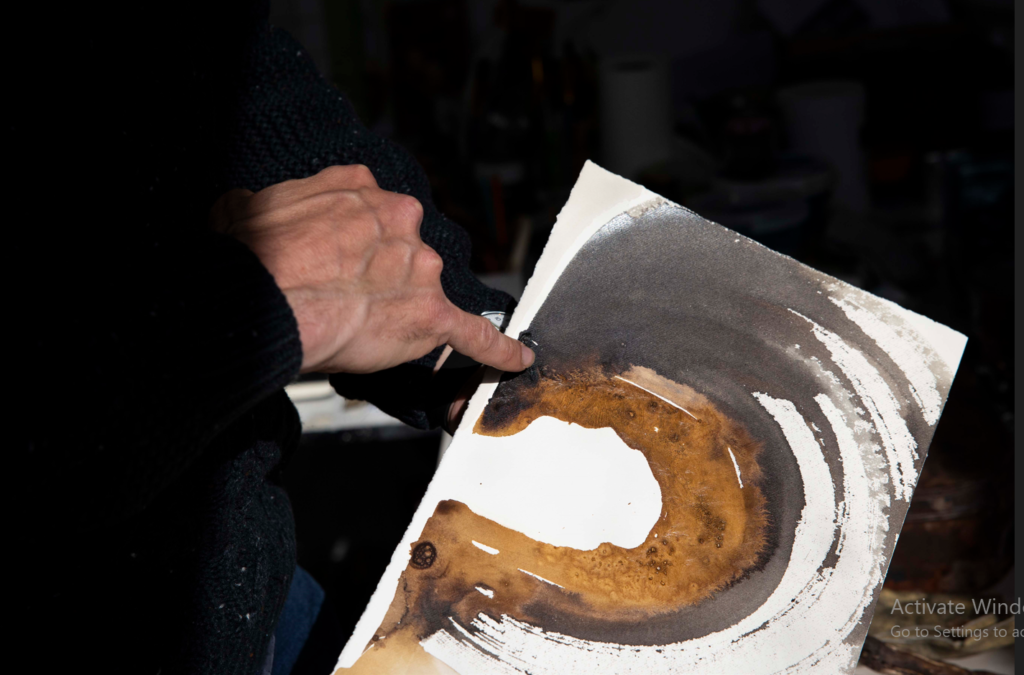
Home made ink, made from soaking iron galls and other tannic materials in sea water, the salt crystals sparkle on the surface of the rough paper (Clare Keogh)
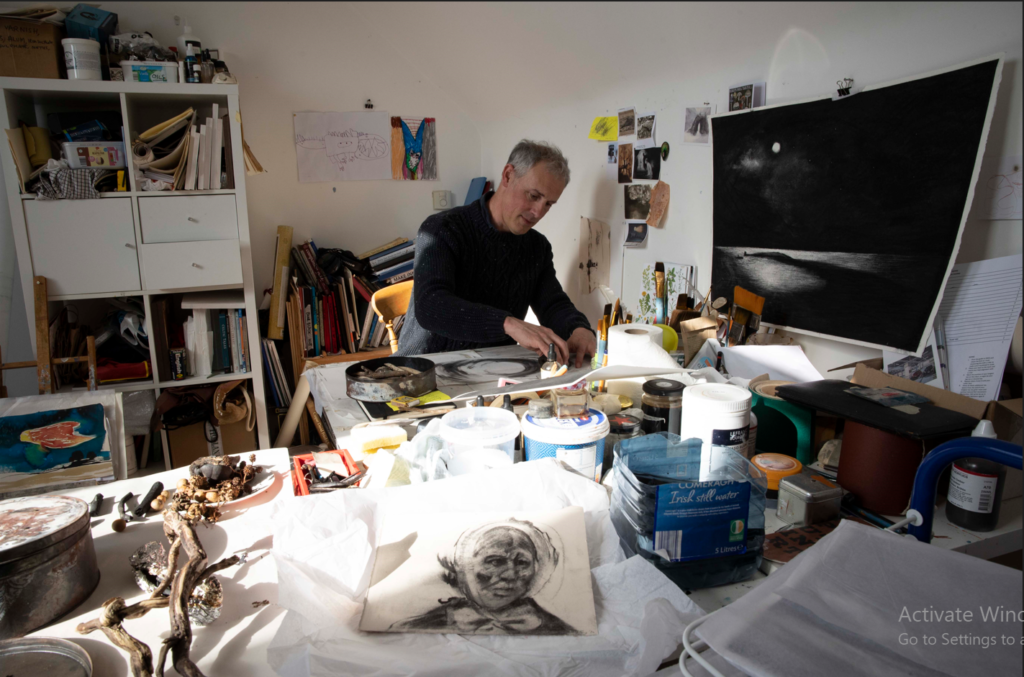
David in his studio on the Wexford Coast, surrounded by the images he used to create ‘The Wexford Whale’ (Clare Keogh)
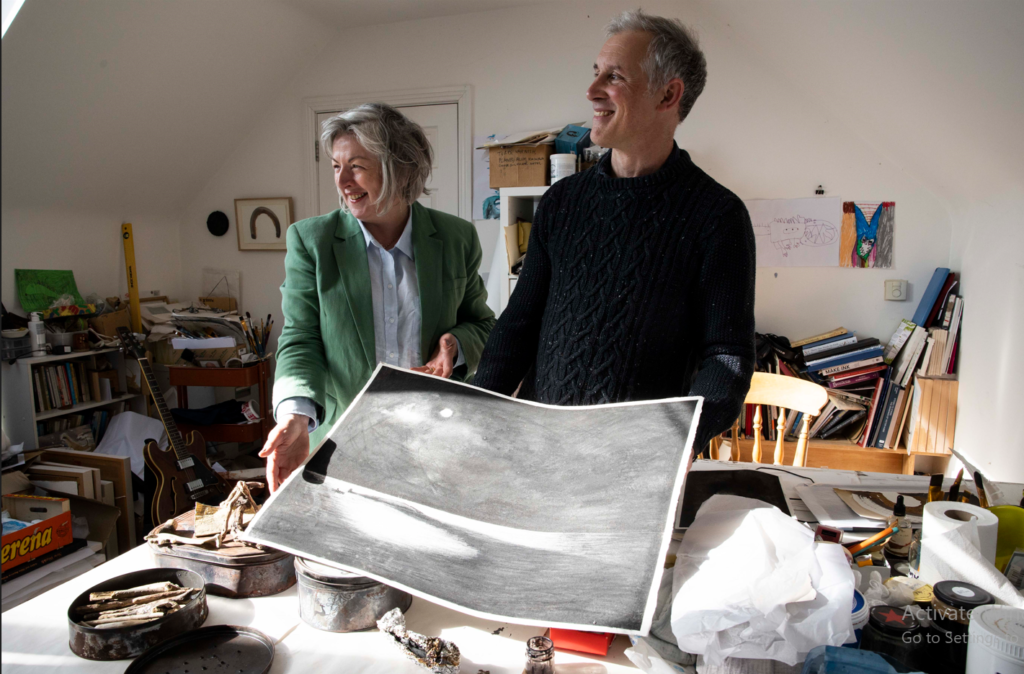
Professor Claire Connolly and David Begley with charcoal animations used to make ‘The Wexford Whale’ (Clare Keogh)
Help keep news FREE for our readers
Supporting your local community newspaper/online news outlet is crucial now more than ever. If you believe in independent journalism, then consider making a valuable contribution by making a one-time or monthly donation. We operate in rural areas where providing unbiased news can be challenging. Read More About Supporting The West Wales Chronicle










